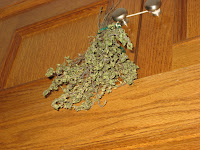Here's the start of the article; click here to read it in its entirety.
"By more than a 2-to-1 margin, California voters favor an initiative to require food manufacturers and retailers to label fresh produce and processed foods that contain genetically engineered ingredients.
As of September 23, the leading contributors to the attempt to defeat Prop 37 are the chemical giants (pesticides and genetically engineered seed) Monsanto ($7.1 million) and DuPont ($4.9 million). Processed foodstuff companies Pepsico ($1.7 million), Nestle ($1.2 million), Coca-Cola ($1.2 million) and Conagra ($1.1 million) are also paying (and praying) for Prop 37's demise.
"With less than six weeks until election day, Proposition 37 is supported by 61% of registered voters and opposed by 25%, according to a new USC Dornsife/Los Angeles Times poll. An additional 14% were undecided or refused to answer.
"The poll showed broad support among voter groups, but the interviews took place before Tuesday's start of a major television advertising blitz by opponents aimed at changing voters' minds on the issue.
"So far, the opposition campaign has raised more than $32.5 million, collected mostly from businesses affected by the measure. [See below.]
"If approved by voters Nov. 6, the labeling initiative would make California the first state in the nation to require labels on genetically engineered crops or processed foods, such as corn, soybeans, sugar beets and Hawaiian papayas. It would require labels on supermarket shelves or on food packages
.
"The California ballot issue is being watched closely by experts who say it could set the stage for battles in other states and perhaps thrust the issue of labeling genetically modified organisms to the forefront in Washington.
"The telephone poll of 1,504 registered voters statewide was conducted Sept. 17 to 23. It showed majority support among most age groups, geographic areas, ethnic groups and educational levels."
The Delicious Truth/Cook with Class has contributed $150 in support of Prop 37 and is seriously considering adding to that total.
.jpg)




















